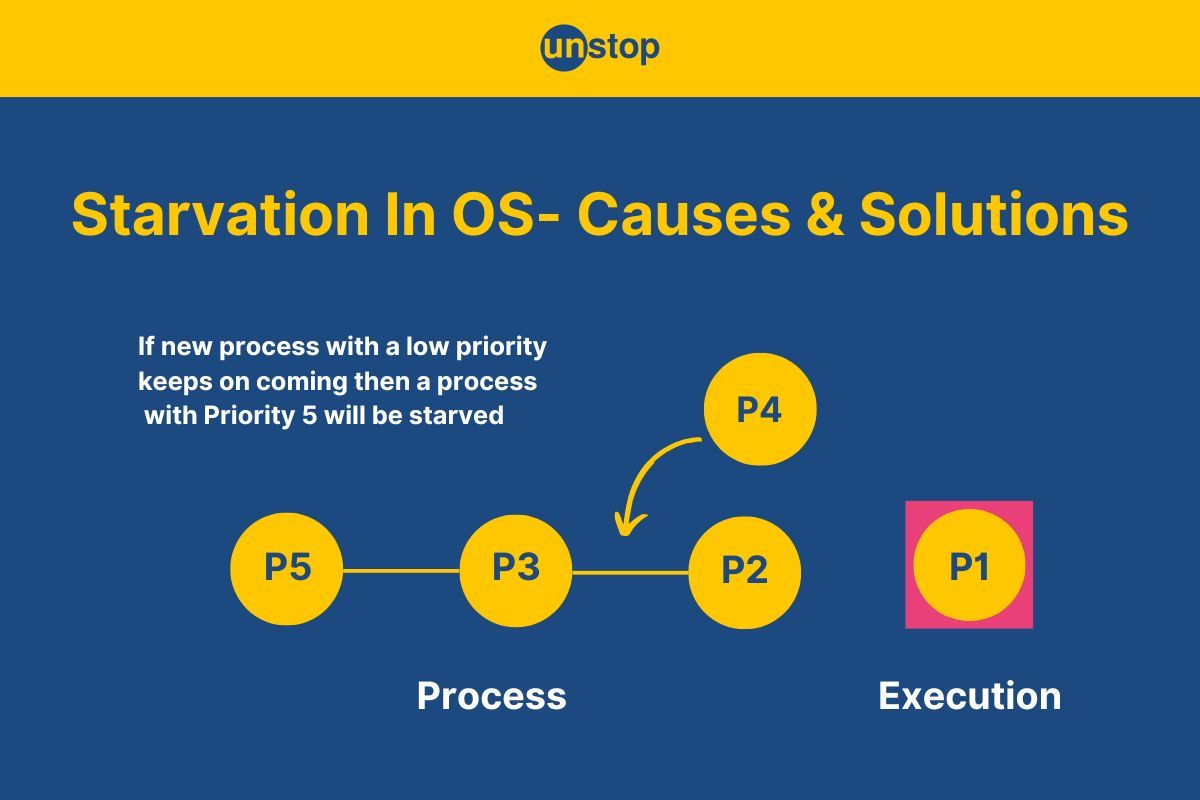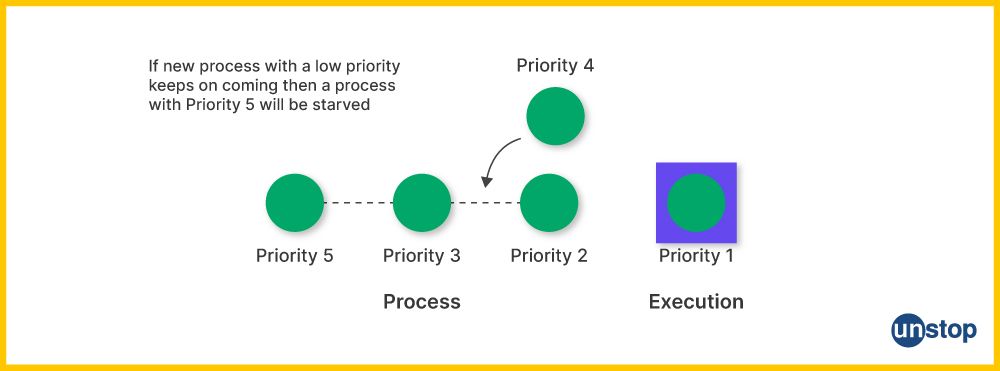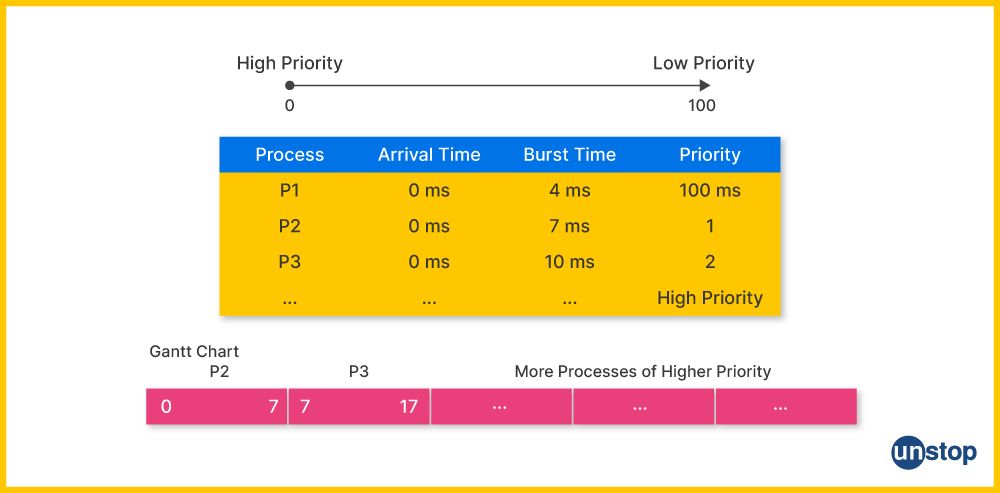- What Is An Operating System?
- What Is The Importance Of Operating Systems?
- What Are The Functions Of Operating System?
- Services Provided By Operating System
- Types Of Operating System
- Some Popular Operating Systems
- Conclusion
- Frequently Asked Questions
- Test Your Skills: Quiz Time
- What Is An Operating System?
- Types Of Operating Systems
- Batch OS | Types Of Operating Systems
- Multi-Programming OS | Types Of Operating Systems
- Multi-Processing OS | Types Of Operating Systems
- Multi-Tasking OS | Types Of Operating Systems
- Time-Sharing OS | Types Of Operating Systems
- Distributed OS | Types Of Operating Systems
- Network OS | Types Of Operating Systems
- Real-Time OS | Types Of Operating Systems
- Mobile OS | Types Of Operating Systems
- History Of Operating System
- Operating Systems in Business: Achieving Maximum Utilization
- Advantages & Disadvantages of Operating Systems
- Popular Operating Systems In The Market
- Conclusion
- Frequently Asked Questions
- Test Your Skills: Quiz Time
- What Is A Process In Programming?
- What Is Process Scheduling In OS?
- The Need for Process Scheduling In OS
- What is CPU Scheduling Algorithm?
- Different Types Of CPU Scheduling Algorithms
- Conclusion
- Frequently Asked Questions
- Test Your Skills: Quiz Time
- Evolution & Generations Of Computers
- Definition Of A Computer System
- Components & Classification Of Computer Systems
- Basics Of Computer Networking & The Internet
- Introduction To Operating Systems
- Exploring Computer Memory & Storage
- Importance Of Computer Security & Privacy
- Applications Of Computer Fundamentals
- Job Prospects With Computer Fundamentals
- Frequently Asked Questions (FAQs)
- Master Your Skills: Quiz Time!
- Types of threads per process
- Introducing Thread Models
- What is Multithreading?
- Advantages of Multithreading
- Disadvantages of Multithreading
- Multithreading Models
- Multithreading Vs. Multitasking
- Difference between Process, Kernel Thread and User Thread
- Conclusion
- FAQs
- Test Your Skills: Quiz Time
- What is Booting Process?: Understanding the Types
- Steps in the Booting Process of Computer
- Boot Sequence in Operating System
- Booting Process: Evolution & Troubleshooting
- What is Secure Boot?
- What is Dual Booting?
- Conclusion
- Frequently Asked Questions
- Test Your Skills: Quiz Time
- What Is A Counter?
- Difference Between Synchronous And Asynchronous Counters
- What Is Synchronous Counter?
- What Is Asynchronous Counter?
- Conclusion
- Frequently Asked Questions
- Test Your Skills: Quiz Time
- History Of Mutex And Semaphore
- Difference Between Mutex And Semaphore
- What Is A Mutex?
- What Is A Semaphore?
- Common Facts About Mutex And Semaphore
- Conclusion
- Frequently Asked Questions
- Test Your Skills: Quiz Time
- What is a File?
- What is a Folder?
- Difference Between File and Folder (Table)
- Summing Up
- Test Your Skills: Quiz Time
- Paging
- Advantages of Paging
- Disadvantages of Paging
- Segmentation
- Advantages of segmentation
- Disadvantages of segmentation
- Difference between Paging and Segmentation
- Conclusion
- FAQs
- Test Your Skills: Quiz Time
- Types of Fragmentation
- Internal Fragmentation
- External Fragmentation
- Difference between Internal and External Fragmentation
- Summing up
- Test Your Skills: Quiz Time
- What is Paging in OS?
- Characteristics of Paging in OS
- Paging in OS: Page Table
- Paging with TLB (Translation Look-aside Buffer)
- Advantages of Paging in OS
- Disadvantages of Paging in OS
- Summing Up
- Frequently Asked Questions
- Test your skills: Quiz Time
- What Is Starvation In OS?
- Starvation In OS: Common Causes
- What Is Deadlock?
- Difference Between Deadlock And Starvation in OS
- Solutions To Starvation In OS
- Conclusion
- Frequently Asked Questions
- Test Your Skills: Quiz Time
- Introduction to DOS: A brief history
- Introduction to Windows: A brief history
- Working of DOS
- Working of Windows
- Line of difference: DOS versus Windows
- Versions of DOS and Windows
- Summing Up
- Test Your Skills: Quiz Time
- Understanding File And Directory In OS
- The Directory Structure In OS
- Types Of Directory Structure In OS
- Directory Implementation In OS
- Conclusion
- Frequently Asked Questions
- Test Your Skills: Quiz Time
- What is the purpose of CPU scheduling?
- What is preemptive scheduling?
- What is a non-preemptive scheduling method?
- Comparison between preemptive and non-preemptive scheduling
- Basic differences between the preemptive and non-preemptive scheduling techniques
- Advantages of preemptive scheduling -
- Disadvantages of preemptive scheduling
- Advantages of non-preemptive scheduling -
- Disadvantages of non-preemptive scheduling
- Test Your Skills: Quiz Time
- What Is Multiprogramming?
- Advantages of Multiprogramming Operating System
- Disadvantages of Multiprogramming Operating System
- What Is Multitasking?
- Advantages of Multitasking Operating System
- Disadvantages of Multitasking Operating System
- Multiprogramming Vs Multitasking
- Frequently Asked Questions
- Test Your Skills: Quiz Time
- Character User Interface
- Advantages of CUI
- Disadvantages of CUI
- Graphical User Interface
- Advantages of GUI
- Disadvantages of GUI
- Major Differences Between CUI and GUI
- Summing Up
- Test Your Skills: Quiz Time
What Is Starvation In OS? Definition, Causes And Solution

In an operating system, starvation can happen when a process or thread is unable to advance or complete its work because of a shortage of resources. This problem mostly occurs in priority-based scheduling systems, where requests with higher priorities are handled first while requests with lower priorities could take longer to handle.
In densely loaded computer systems, a steady stream of high-priority activities can starve low-priority processes by preventing them from getting the resources they require. The concept of starvation in operating systems, its causes, and potential solutions will all be covered in this article.
What Is Starvation In OS?

Starvation is a resource management problem where a process does not get the resources it needs for a long network bandwidth because the resources are being allocated to other processes. Or, a condition where a process does not get the resources it needs for a long span of time because the resources are being allocated to other processes.
Starvation in operating system occurs generally in a priority-based scheduling system where higher-priority task requests get processed first. Thus a request with the least priority may never be processed.
Since the low-priority process does not interact with anything, it becomes impossible for starvation to cause a deadlock. It is thus, a fail-safe method to get out of a deadlock - making it much more important to understand how it affects the system as a whole.
Starvation In OS: Common Causes
Here are some causes of starvation in operating system:
- Insufficient Resources: Starvation can occur if there aren't enough resources (e.g., CPU time, memory, I/O devices) to meet the demands of all processes, causing lower-priority processes to wait indefinitely.
- Random Process Selection: If the system uses a random process selection for resource allocation, some processes may be left waiting for a long time due to the non-selection, leading to starvation.
- Faulty Resource Allocation: Poor or biased resource allocation strategies (e.g., continuously favoring higher-priority tasks) can prevent certain processes from obtaining the resources they need, resulting in starvation.
Example Of Starvation In OS

In the above example, process P2 is having the highest priority, and process P1 is having the lowest priority. In general, we have a number of processes that are ready for execution. As time passes, if only those processes come in the CPU time that have a higher priority than process P1, then process P1 will keep on waiting for its turn for CPU time allocation. But, it will never get CPU - because all the other processes have a higher priority range than P1. This is called starvation.
What Is Deadlock?
A deadlock occurs when many processes in an operating system are unable to go forward because one process is holding a resource while waiting for a resource that is being held by another process. This creates a circular dependency, where none of the processes can make progress, leading to a system deadlock.
Necessary Conditions For Deadlock:
A deadlock occurs when the following four conditions hold simultaneously:
- Mutual Exclusion: Resources are non-shareable and can only be held by one process at a time.
- Hold and Wait: A process is holding at least one resource and waiting for additional resources held by other processes.
- No Preemption: Resources cannot be forcibly taken from a process; they must be released voluntarily.
- Circular Wait: A set of processes are waiting for each other in a circular chain, creating a deadlock.

Difference Between Deadlock And Starvation in OS
Let us discuss deadlock vs. starvation with the help of the comparison table below:
| Aspect | Deadlock | Starvation |
|---|---|---|
| Definition | A situation where multiple processes are stuck because each is waiting for a resource held by another process, creating a circular wait. | A condition where a process is unable to obtain the required resources to execute because higher-priority tasks are continuously given preference. |
| Cause | Occurs due to circular dependency, where processes hold resources while waiting for others. | Occurs in priority-based scheduling when low-priority tasks are indefinitely delayed by higher-priority tasks. |
| Resource Allocation | Processes hold onto resources while waiting for others, causing a deadlock. | Resources are continuously allocated to other processes, depriving the low-priority process. |
| Conditions Required | Mutual Exclusion, Hold and Wait, No Preemption, and Circular Wait. | Biased scheduling where low-priority processes are postponed indefinitely. |
| Process Execution | No process can proceed because they are all waiting for each other. | Low-priority processes can never execute or have long delays because higher-priority processes dominate resources. |
| Prevention/Resolution | Deadlock prevention strategies like resource allocation ordering, avoiding circular waits, or deadlock detection and recovery. | Can be avoided by using aging techniques, where the priority of a process gradually increases over time to prevent starvation. |
| Outcome | The system becomes stuck, and none of the involved processes can progress. | Low-priority processes may experience significant delays or never execute, but the system itself remains functional. |
| Impact on System | Leads to system-wide freeze for the involved processes. | Affects the progress of specific low-priority processes, but the overall system may continue functioning. |
| Relation to Scheduling | Not directly related to scheduling policies but to resource allocation patterns. | Primarily a result of priority-based scheduling algorithm. |
| Example | Two processes each holding a resource while waiting for the other's resource, creating a deadlock. | A low-priority process waiting indefinitely for CPU time because higher-priority processes keep taking precedence. |
Solutions To Starvation In OS
Here are some commonly used techniques and solutions to help solve the starvation in operating systems:
Technique 1: Aging In OS

It is a technique to avoid starvation in a scheduling system. It works by adding an aging factor to the priority of each process request. The aging factor must increase the request priority as time passes and must ensure that a request will eventually be the highest priority request (after it has waited long enough).
- It can also be understood as a condition that is used to reduce starvation of low-priority tasks. It is a process that gradually increases the priority of critical tasks depending on the waiting process time. It ensures that jobs in the lower priority level queues will eventually complete their execution.
- Aging is used to ensure that jobs with lower priority will eventually complete their execution. This method can be used to reduce the starvation of low-priority tasks.
- There are many ways to implement aging, but all have the same principle that the priority of a process should increase as it waits in the ready priority queue. The increase in priority may or may not be equal to the waiting time of the process.
For Example: The priority of a process increases as it waits in the ready queue. For example, if a process starts with a priority of 85, after a specified time (e.g., every 10ms), its priority might be increased (e.g., reduced by 1 each time). As a result, the process's priority will eventually become high enough to be selected for execution.
Technique 2: Priority Scheduling
This scheduling method involves assigning priorities to processes and scheduling them based on these priorities. However, the specifics of how priorities are assigned can vary:
- Internal Priorities: Assigned based on factors like memory requirements, execution time limits, or I/O and CPU burst ratios.
- External Priorities: Set based on external criteria such as the importance of the process or resource usage costs.
Types of Priority Scheduling:
- Preemptive Priority Scheduling: If the new process that arrived at the ready priority queue has a higher priority than the currently running process, the CPU is preempted. This means the processing of the current process is stopped and the incoming new process with higher priority gets the CPU for its execution.
- Non-Preemptive Priority Scheduling: In the case of non-preemptive priority scheduling algorithm, if a new process arrives with a higher priority than the current running process, the incoming process is put at the head of the ready queue. This means after the execution of the current process, it will be processed.
Other Solutions To Handle Starvation In Operating System:
Some solutions that can be implemented in a system to handle starvation are as follows:
- An independent manager can be used for the allocation of resources. This resource manager distributes resources fairly and tries to avoid starvation.
- Random selection of processes for resource allocation or processor allocation should be avoided as they encourage starvation.
- The priority scheme of resource allocation should include concepts such as aging, where the priority of a process is increased the longer it waits, which avoids starvation.
Conclusion
Starvation in operating systems is a critical issue that arises when processes are unable to acquire the necessary resources due to the dominance of higher-priority tasks. While it is mostly associated with priority-based scheduling, it can severely impact system performance, causing delays and unresponsiveness for lower-priority processes.
Techniques like aging and fair resource allocation policies are essential to prevent starvation, ensuring that all processes receive the attention they need in a balanced and efficient manner. Addressing starvation not only improves system fairness but also enhances the overall user experience by ensuring that no task is left waiting indefinitely.
Frequently Asked Questions
Q. Name the different types of operating systems.
The different types of operating systems are:
- Batch Operating System
- Time-Sharing or Multitasking Operating System
- Distributed Operating System
- Network Operating System
- Real-Time Operating System
- Mobile Operating System
Q. What is meant by CPU scheduler?
A CPU scheduler is an element of an operating system that controls how programs or threads are executed on a CPU allocation. Its primary responsibility is to decide how operations should be carried out, taking into account a variety of parameters like CPU use, throughput, turnaround time, waiting time, and reaction time.
Q. What is starvation in OS?
When a process in an operating system is starved of the resources it requires for an extended period of time because those resources are being assigned to other processes, it is referred to as starvation. This issue primarily arises in a priority-based scheduling system where requests with high priority processes are executed first, and those with low priority take longer to process. Starvation can lead to several problems, such as reduced system responsiveness, violation of response time guarantees, and even system failure.
Q. Describe the concept of priority aging.
Operating systems employ aging as a scheduling technique to prevent starvation, a resource management issue when a process goes for a lengthy period of time without the resources it requires because those resource for execution are being given to other processes. In priority aging, as a process waits in the system, its priority steadily rises, guaranteeing fair resource distribution for all processes. The idea of priority aging is founded on the idea that a process' priority should rise while it waits in the ready queue.
Q. Define deadlock.
When two or more processes become stuck in an operating system and none of them can move forward because one process is holding a resource and waiting process for another resource that is being held by another process, the starvation situation is known as a deadlock. Deadlock can happen in distributed systems, parallel computing, and multiprocessing systems because these systems frequently employ software or hardware locks to arbitrate shared resources and implement process synchronization.
Q. What role does resource allocation policy play?
Resource allocation policies greatly influence the management of starvation in operating systems. A fair and efficient resource allocation method may prevent starvation by ensuring that all processes and threads have access to the resources they need. To prevent resource starvation, the strategy should take into consideration variables like importance, aging, and even resource allocation.
Q. What is disc starvation?
When a process or program is unable to access or use the disc resources it needs, it is referred to as disk space starvation in an operating system. This might be the result of a number of factors, such as improper resource management, excessive disc usage by other programs, ineffective disc scheduling algorithms, or disc failures.
Test Your Skills: Quiz Time
You might also be interested in reading:
As a biotechnologist-turned-writer, I love turning complex ideas into meaningful stories that inform and inspire. Outside of writing, I enjoy cooking, reading, and travelling, each giving me fresh perspectives and inspiration for my work.
Login to continue reading
And access exclusive content, personalized recommendations, and career-boosting opportunities.
Subscribe
to our newsletter
















Comments
Add comment